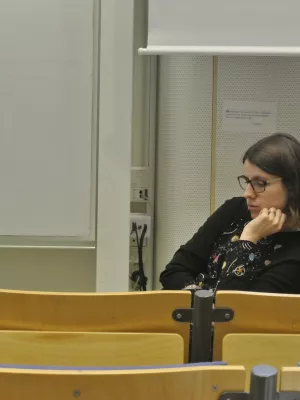
Sanna Alwmark
Postdoc

A 3-D study of mineral inclusions in chromite from ordinary chondrites using synchrotron radiation X-ray tomographic microscopy-Method and applications
Författare
Summary, in English
A method is described for imaging in 3-D the interiors of meteoritic chromite grains and their inclusions using synchrotron radiation X-ray tomographic microscopy. In ordinary chondrites, chromite is the only common mineral that survives long-term weathering on Earth. Information about the silicate matrix of the original meteorite, however, can be derived from mineral inclusions preserved in the protecting chromite. The inclusions are crucial in the classification of fossil meteorites as well as sediment-dispersed chromite grains from decomposed meteorites and larger impacts, as these are used for characterizing the past influx of material to Earth, but have previously been difficult to locate. The method is non-destructive and time efficient for locating inclusions. The method allowed quantitative and morphological studies of both host chromite grains and inclusions in three dimensions. The study of 385 chromite grains from eight chondrites (H4-6, L4-6, LL4, LL6) reveals that inclusions are abundant and equally common in all samples. Almost two-thirds of all chromite grains contain inclusions, regardless of group and type. The study also shows that the size of the inclusions and the host chromite grains, as well as the number of inclusions, within the host chromite grains vary with petrographic type. Thus, the petrographic type of the host of a suite of chromite grains can be determined based solely on inclusion content. The study also revealed that the amount of fractures in the host chromite can be correlated to previously assigned shock stages for the various chondrites. The study has thus shown that the features and inclusions of fossil chromite grains can give similar information about a former host meteorite as do studies of an unweathered whole meteorite, meaning that this technique is essential in the studies of ancient meteorite flux to Earth.
Avdelning/ar
- Berggrundsgeologi
Publiceringsår
2011
Språk
Engelska
Sidor
1071-1081
Publikation/Tidskrift/Serie
Meteoritics and Planetary Science
Volym
46
Issue
8
Länkar
Dokumenttyp
Artikel i tidskrift
Förlag
Wiley-Blackwell
Ämne
- Geology
Status
Published
ISBN/ISSN/Övrigt
- ISSN: 1086-9379

